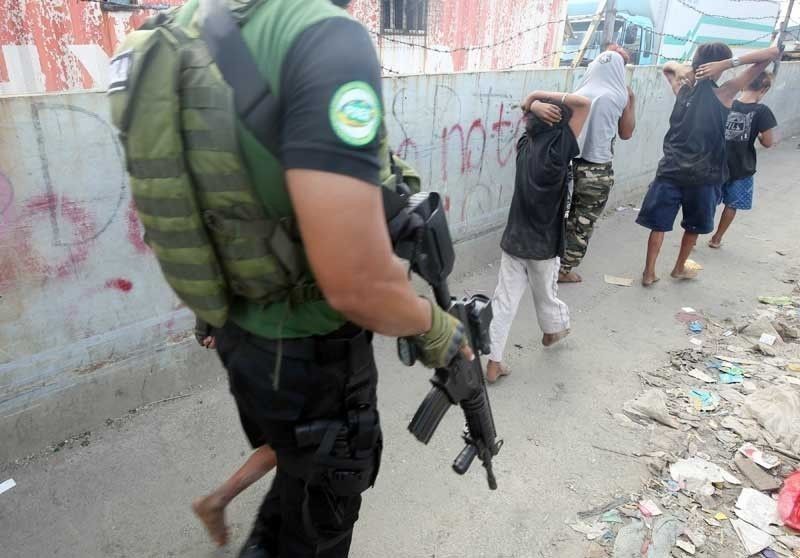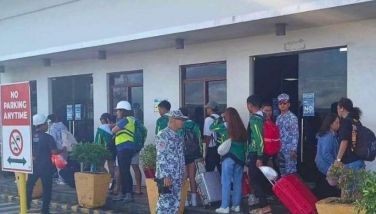Ex-inmate gives hope to juvenile offenders

MANILA, Philippines — A man who had served prison time for robbery and homicide when he was a teenager is now giving hope to juvenile offenders being held at Bahay Pag-asa, a reformation facility for children in conflict with the law, in Las Piñas City.
Gary Cañete, 28, who works as a houseparent for the Department of Social Welfare and Development, was detained for robbery in 2005, a year before Republic Act 9344 or the Juvenile Justice and Welfare Act was enacted into law.
When he was around 10 years old, Cañete fled his house to fend for himself, only to run with the wrong crowd from whom he learned to commit petty crimes such as robbery.
Cañete became a gang leader in his teenage years.
His experience being in prison, when it was still legal to detain minor offenders together with adults, made him feel disappointment when lawmakers revived the bill seeking to lower the minimum age of criminal responsibility to 12 from 15 years.
Cañete considers himself a “success story” of the justice system under the Juvenile Justice and Welfare Act, which he said should be properly implemented instead of being amended.
In an interview with The STAR, Cañete said the government should prioritize improving Bahay Pag-asa facilities and finding the root cause of juvenile offenses and their experience with violence that starts with the family.
“Why change something that will destroy the spirit of the law?” he asked lawmakers.
Cañete recounted his childhood trauma when he was physically abused by his stepfather. He grew up being forced to kneel on mung beans and smacked with a metal stick, forms of corporal punishment once seen as normal but are now frowned upon.
He was arrested for burglary in 2005. At 15 years old, he was detained with adult offenders and was forced to serve the “mayor” of the detention cell. He said he was tortured by police.
“There, I experienced being punched and tortured. I was once smacked in the head with the police blotter. My hands were crushed with armalite bullets inserted between my fingers. I had to scoop up poop from a clogged toilet for the mayor in the cell,” Cañete said.
“But that’s the culture in the jail,” he added.
Upon his release in 2006 after the enactment of the new juvenile welfare law, he was on the run – this time for committing homicide after breaking into a house.
Cañete was convicted of the crime in 2008 when he was 18 years old.
But his sentence was suspended when Judge Joselito de Jesus Vibandor of the Las Piñas regional trial court ordered him to undergo an intervention program by the Association Compassion Asian Youth (ACAY).
“Through its training, I fully understood what really happened to me. I got to know myself,” Cañete said of a juvenile’s development coming to terms with an offense.
Guided by the training of his rehabilitation, he served as a househelp for the ACAY dormitory at 19 years old until he was motivated to get an endorsement to work as encoder and houseparent for the DSWD when he turned 24.
“When I was working as an encoder, I was motivated when I saw my fellow minor offenders greeting me at their custodial facility. I knew them from back in the days. That was when I knew something was missing, that I had to help,” Cañete said.
He was assigned in 2014 at the Las Piñas Bahay Pag-asa facility where he used his experience to inspire minor offenders that they still have a chance to reform.
Cañete appealed to legislators to reconsider the move to lower the age of criminal liability and instead focus on helping juvenile offenders recover from their violent past and treat them like children who need guidance, not criminals to be jailed.
“It’s like they killed the childhood of the minor, of his right to be a child, of his second chance in life,” he said.
Nora Guevarra, social welfare officer and head of the social services cluster of the city’s Bahay Pag-asa, said reforms in the family and youth-oriented programs should be implemented instead of lowering the age of criminal responsibility.
“Most of our clients here are neglected because they come from big families with at least 12 siblings,” Guevarra said.
Most of the juvenile offenders undergoing rehabilitation at the center are being held on theft and robbery charges, according to Guevarra.
She said some of the children were school drop-outs and came from dysfunctional families.
Bahay Pag-asa center head Ofelia Gilo said the facility would be crowded if lawmakers approve the measure lowering the age of criminal responsibility.
Established in 2015, the four-story facility located in Sta. Cecilia Village can only accommodate 30 juvenile offenders.
- Latest
- Trending
































